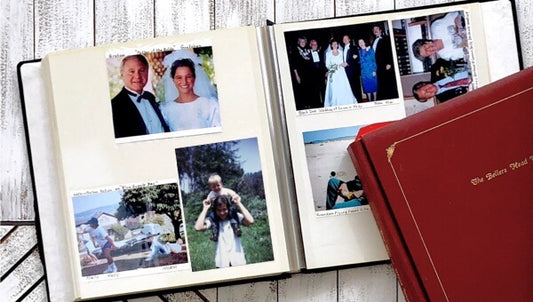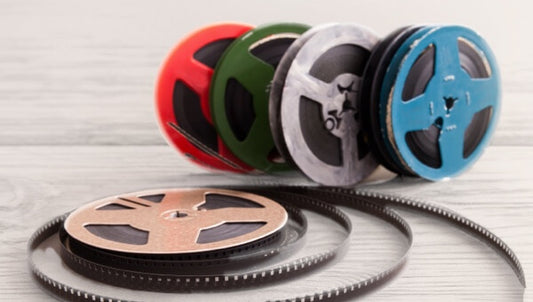Photographs have preserved both personal memories and defining historical moments for nearly two centuries. While most of us cherish photos of family milestones, the world’s oldest surviving images reveal the early evolution of photography itself. These rare photos, capturing the first human, the moon, U.S. presidents, and more, mark the start of visual storytelling across science, art, and culture. From View from the Window at Le Gras to early color and aerial photography, these 20 groundbreaking images showcase how far we’ve come. Capture presents you with a journey through time - an unforgettable look at the world’s earliest photographs and the pioneers behind them.
Jump to:
- Pioneers and Innovators in Photography
- The 20 Oldest Photographs Ever Taken
- The Historical and Cultural Significance
- Challenges of Preservation and Restoration
Pioneers and Innovators in Photography
The evolution of the camera leading to the oldest photograph still in existence begins with the portable Camera Obscura invented by Johann Zahn in 1685, but it wasn’t until Joseph Nicephore Niepce figured out how to manipulate it to expose pewter plates coated with bitumen of Judea that photography really took off.
Niepce is now credited with the world’s oldest known surviving photograph, View from the Window at Le Gras, but he’s also profoundly influential in the progress of the camera itself. In fact, without his invention we wouldn’t have been able to progress so rapidly to the invention of video cameras!
Talbot’s Innovations and the Path to Print Negatives
A few years after Niepce’s invention, Henry Fox Talbot discovered how to fix images to paper using optics and chemistry, which made it possible to create multiple print negatives for the first time in 1834. Other techniques and inventions that paved the way for the ancient snapshots and vintage photos below include the daguerreotype process and the development of celluloid emulsion film by Eastman Kodak in 1888.
Creativity and the First Staged Photo
Before celluloid film, photography took a more creative turn. In 1840, French photography pioneer Hippolyte Bayard created one of the earliest staged photographs, an image in which he pretended to have drowned himself. He also invented a process that produced direct positive paper prints in the camera that influenced slide film, another positive film format that was developed much later.
The Foundation for the First Digital Camera
These few inventions laid the foundation for the future of photography that eventually led to the first digital camera nearly 150 years later and enabled the capture of not just the first photo, but many of the earliest surviving photographs in history.

Early inventors shaped photography into a tool for capturing life.
The 20 Oldest Photographs Ever Taken
These 20 photographs are among the oldest ever taken. Each one played a key role in the development of photography and the rise of new media formats. They also capture historical moments that shaped human history. Included are not only the oldest photographs, but also some of the oldest of different types like astronomical, tourism, war, color, and aerial photography.
"View from the Window at Le Gras" (1826) by Joseph Nicéphore Niépce
Taken in 1826, this is widely considered to be the world’s oldest photograph that’s still in existence and was captured using a technique called heliography that produced images on metal plates. This photographic process uses bitumen, asphalt, and pewter to record light for at least 8 hours, but possibly as long as two days. When the bitumen hardened due to the light, it created the heliographic image you see here.
The oldest surviving photograph portrays buildings and tree lines and while it might not look impressive today due to our experience with modern film rolls and digital images, it was the beginning of a long line of photographic advancements.
"Boulevard du Temple" (1838) by Louis Daguerre
This picture of the Boulevard du Temple in Paris, France is significant because it’s the first photograph of a human being. Additionally, unlike “View from the Window at Le Gras,” Louis Daguerre had developed a method that reduced the exposure time to only 4-5 minutes. It depicts a street view from a window during the morning in which buildings, trees, and a couple of people were captured.
It’s a crucial piece in the history of early photography and a testament to how far the technology had come just a decade after the first photo by Niépce.
"Self-Portrait as a Drowned Man" (1840) by Hippolyte Bayard
This image is widely recognized as the oldest staged photograph. Created by French photography pioneer Hippolyte Bayard, it depicts a dramatized scene in which Bayard poses as a drowned man. The photograph includes handwritten text claiming that “Monsieur Bayard has drowned himself,” a pointed response to the French government’s failure to acknowledge him for inventing a photographic process rivaling Daguerre’s.
Unlike earlier surviving photos, this one was deliberately arranged and emotionally expressive - marking the beginning of artistic photography and storytelling through images.
“The Oriel Window, South Gallery, Lacock Abbey” (1839) by William Henry Fox Talbot
Talbot’s photograph of a window in Lacock Abbey, his own residence. is among the first to use the calotype process, which created paper negatives using gallic acid. This breakthrough allowed for multiple prints from a single exposure, a major step forward from the single-image limitation of daguerreotypes.
He later compiled his work in The Pencil of Nature, the first commercially published photo book, which showcased the practical and commercial future of early photography.
First Photo of a U.S. President (1843) by Southworth & Hawes
This early presidential photograph features John Quincy Adams captured 14 years after his term ended. Though Adams was no longer in office, this 1843 daguerreotype by Southworth & Hawes is considered the first photo of a U.S. president. According to the Library of Congress, the first president photographed while in office was James K. Polk, just six years later in 1849.
"The Open Door" (1844) by William Henry Fox Talbot
This photo of a doorway with a lantern and broom as well as some vegetation is one of Talbot’s most famous and admired photos using the new technology he was putting to good use. The slightly askew symmetry, use of balancing light and shadow, combination of interior and exterior, and other elements make it an amazingly artistic expression that helped propel photography toward more creative pursuits.
"The Haystack" (1844) by William Henry Fox Talbot
This image was another historical contribution by Talbot and showed how extra exposure could brighten the mood and capture distinct shadows of everyday objects. While you may want to restore photos that have faded, Talbot wanted to use it as a mode of experimentation as he became one of the most important figures in the history of photography.
Untitled Self-Portrait (1843 or 1844) by Robert Cornelius
Often referred to as the first self-portrait photograph, image by Philadelphia chemist Robert Cornelius is widely recognized as the first selfie in history. Taken in either 1843 or 1844, it captures Cornelius’s likeness with a striking level of clarity for the time. According to The Public Domain Review, this photo not only made Cornelius a photographic pioneer but also marked him as the first person in the United States to open a commercial photo studio.
First Photograph of the Sun (1845) by Leon Foucault and Hippolyte Fizeau
This was the beginning of astronomical photography because it is the oldest photo of the Sun including detailed sunspots. Captured in 1845 by Léon Foucault and Hippolyte Fizeau, the image astonishingly reveals visible sunspots, something previously unseen by the human eye in photographic form. Their innovative technique overcame the intense brightness of the sun, laying the groundwork for future solar and space imaging.
"The Valley of the Shadow of Death" (1855) by Roger Fenton
Regarded as one of the earliest war photographs, this iconic image was captured by Roger Fenton during the Crimean War. Taken on April 23, 1855, it depicts a desolate valley scattered with cannonballs, symbolizing the haunting aftermath of battle. Fenton risked his life to take this photograph while conflict raged nearby, setting the precedent for modern war photojournalism and showing the power of visual media in documenting history.

The oldest photos mark key moments in history and innovation.
"Gentlemen" (~1855) by André-Adolphe-Eugène Disdéri
Disdéri revolutionized photography by inventing the carte de visite, a method for mass-producing portraits. This photo, taken around 1855, showcases his mastery of posing and contrast. He is also credited with creating the twin-lens reflex camera, a key innovation that later influenced the development of 8mm film cameras. His work paved the way for photography as both an art form and a commercial enterprise.
"Jerusalem, Valley of Josapahat, Tomb of St. James” (circa 1856) by Auguste Salzmann
Often cited among the first examples of travel photography, this image by Auguste Salzmann showcases archaeological ruins in Jerusalem. Though first captured in 1854, it was published in 1856 using salted paper print photography, which added a textured depth to the stonework. This technique helped preserve visual details that were previously difficult to document and marked an early moment in photo tourism - the use of photography to record and share international landmarks.
"The Two Ways of Life" by Oscar Gustave Rejlander (1857)
Known as the first composite photograph and often credited as the earliest example of fine art photography, Rejlander’s “The Two Ways of Life” is a technical and artistic landmark. He combined over 30 negatives to create a single symbolic image portraying the moral path between virtue and vice. This pioneering work elevated photography to an expressive art form and influenced generations of conceptual and staged photography.
"Niagara Falls from the Canadian Side" by Platt D. Babbitt (1858)
This historic daguerreotype is one of the earliest photos of Niagara Falls and among the first to capture rapid motion in photography. Taken from the Canadian side, the image showcases the early limits of exposure techniques and highlights how photographers began experimenting with dynamic natural subjects.
“Boston, as the Eagle and the Wild Goose See It” (1858) by James Wallace Black
This iconic shot of Boston is widely credited as the first aerial photograph in history. Captured from a hot air balloon at 1,200 feet, it demonstrates how early photographers began exploring new vantage points. Black’s image laid the groundwork for aerial reconnaissance, cartography, and modern drone photography.
"Moon" by John William Draper (1840s or 1850s)
This is the first-ever picture of the moon and the date may have predated the first image of the sun from above, but due to a 1865 fire at New York University, the exact date of the photo is unknown. However, it may have been as early as 1840 when this image was taken using the daguerreotype process.
"The Horse in Motion" by Eadweard Muybridge (1878)
Starting in 1872, Eadweard Muybridge wanted to capture movement in multiple frames, and he finally did so with this first photo of movement in 1878 that depicted a galloping horse.
Untitled Color Photograph by Thomas Sutton (1861)
This first color photograph in history was taken in 1861 by Thomas Sutton using a method developed by physicist James Clerk Maxwell. The image of a tartan ribbon—created with red, green, and blue filters—is a milestone that led to modern color photography and RGB printing methods used today.
"The Steerage" by Alfred Stieglitz (1907)
Alfred Stieglitz’s "The Steerage" is widely regarded as one of the most important fine art photographs of the 20th century. Taken in 1907, the black-and-white image shows a stark divide between social classes aboard a ship, blending modernist composition with social commentary - ushering in a new era of artistic photography.
"At the Duke of York’s Royal Military School" by Christina Broom (1908)
This 1908 photograph by Christina Broom, often credited as the first female press photographer, captures a moment at the Duke of York’s Royal Military School. Just five years into her career, Broom began documenting key events including the women’s suffrage movement, military parades, and royal ceremonies—cementing her legacy in the history of early photojournalism.
The Historical and Cultural Significance
These early images are more than just visual records—they represent turning points in art, science, and society that still influence photography today.
- Technological Firsts: The oldest surviving photograph and the first color photo show how early inventors pushed the limits of exposure time, chemical processes, and light-sensitive materials.
- Artistic Beginnings: Images like The Steerage introduced the world to artistic modernism in photography, shifting the medium from pure documentation to creative expression.
- Historical Impact: From the first photo of a U.S. president to war photography and aerial imagery, these pioneering moments shaped how we record and understand human history.
- Personal Legacy: Just as these early photographers preserved key moments of the past, your own photo collection, no matter how old or faded, captures your family’s story, memories, and legacy for future generations.

The innovations behind the oldest photographs laid the groundwork for every image we capture today.
Challenges of Preservation and Restoration
Preserving the oldest photographs comes with unique challenges. Museums, collectors, and photo conservators must not only be skilled at organizing photos, ensuring that collections are cataloged, labeled, and stored in logical sequences that protect their historical context and physical integrity.
Another crucial step is understanding how to store film and other fragile materials like daguerreotypes and glass plate negatives. Proper temperature, humidity control, and protective enclosures are essential for preventing irreversible damage.
In many cases, historic photos have already suffered deterioration that cannot be fully reversed. Sadly, some of the world’s earliest photographic records may have been lost forever. That’s why it’s so important to both preserve original copies and invest time into digitizing old photos, making sure they’re accessible for future generations.
Why the World’s Oldest Photographs Still Matter Today
The oldest photographs ever taken give us more than historical records - they show how far we’ve come in capturing life, emotion, and progress through images. While museums preserve iconic prints, everyday people also have valuable memories stored in old photo albums, negatives, and slides. To keep those moments safe, it’s worth turning slides into digital files that last. Capture helps families do just that, using advanced equipment to preserve images without damaging the originals. By protecting your own photo history, you’re continuing the legacy of photography - one memory at a time.











